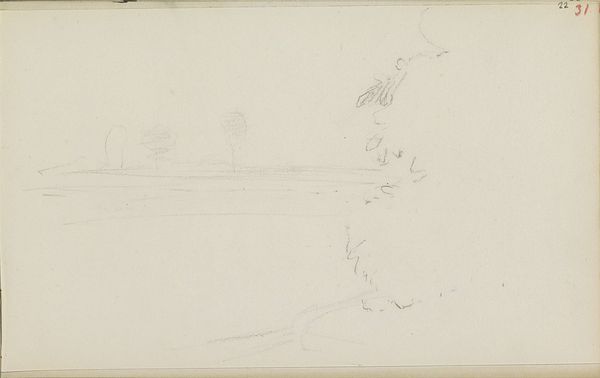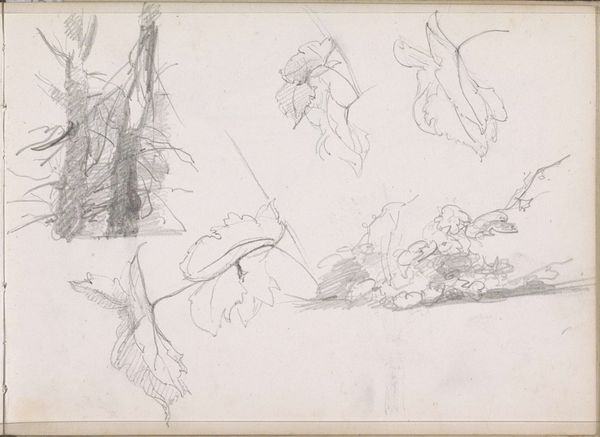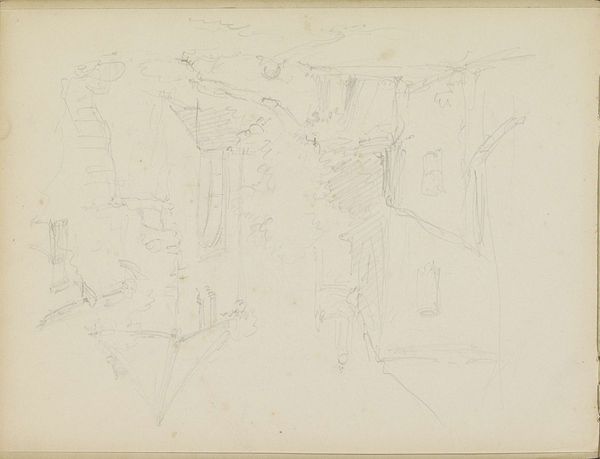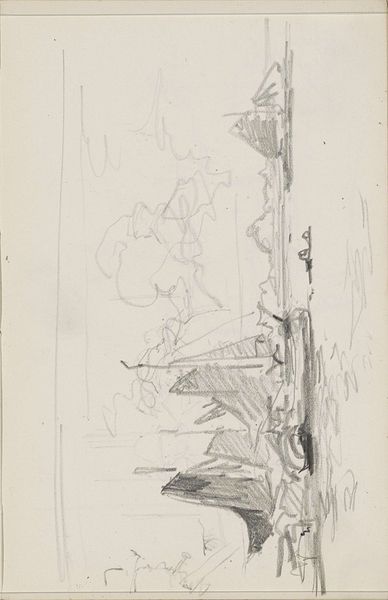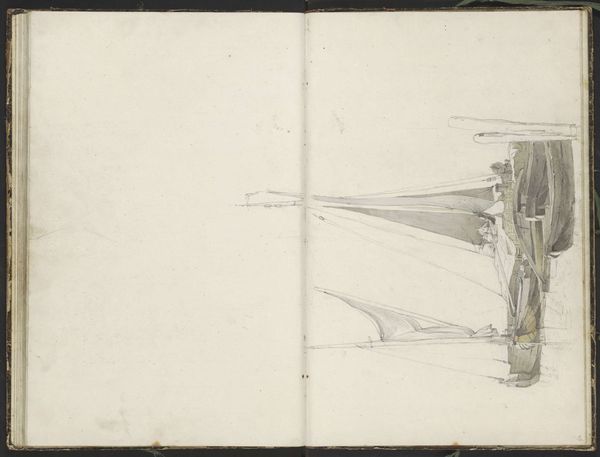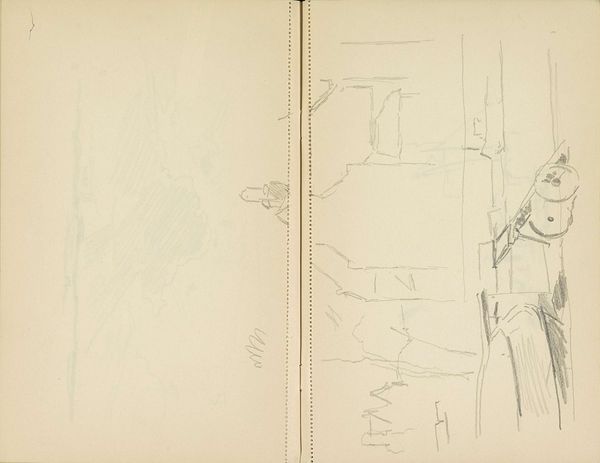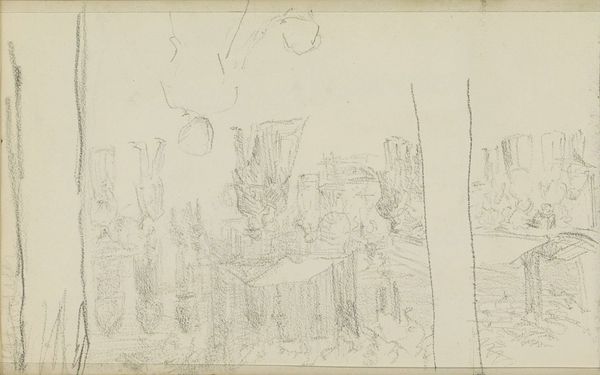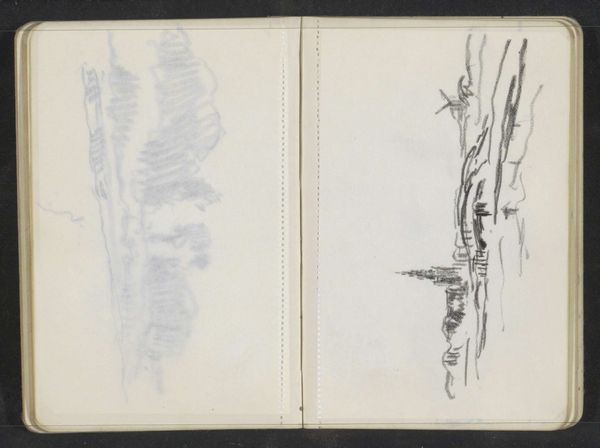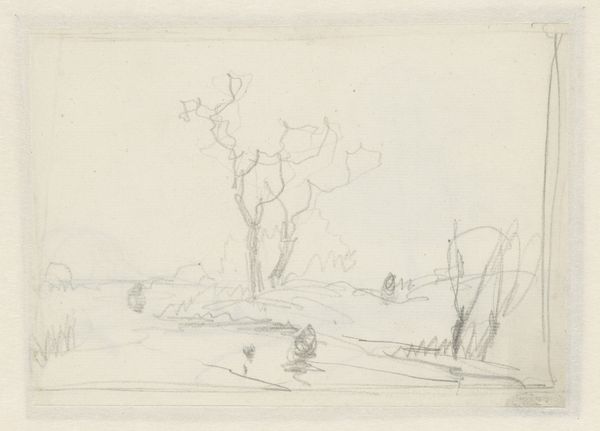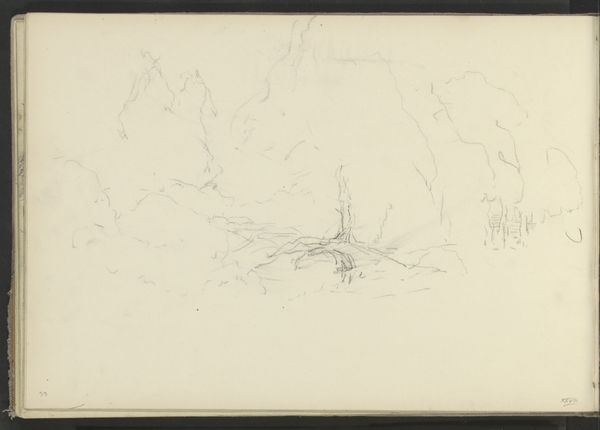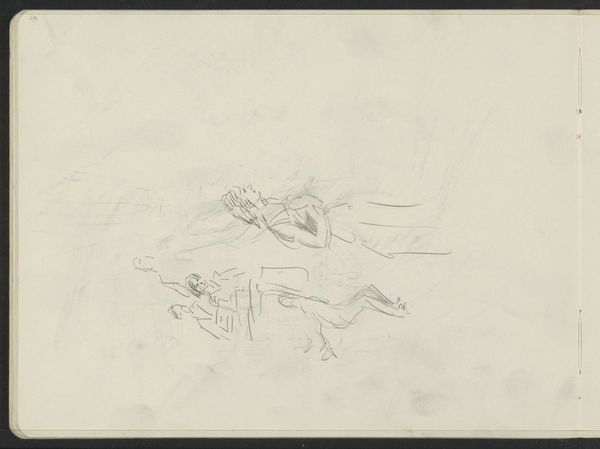
drawing, pencil
#
drawing
#
impressionism
#
pencil sketch
#
landscape
#
road
#
pencil
Copyright: Rijks Museum: Open Domain
Curator: Looking at this work by George Hendrik Breitner, created between 1872 and 1879, I'm immediately struck by its provisional quality, its unfinished nature. Editor: Yes, there’s a sense of transience. It’s almost like catching a fleeting moment. It feels very quiet. Curator: Indeed. Known as “Two Figures on a Path Beside the Water," it’s rendered with pencil, so we are experiencing it in shades of grey that underscore this gentle quality. Let's look at the composition; see how the eye is led along that suggestive pathway beside the hinted water? Editor: I see that; the lack of sharp definition encourages us to create the landscape. Was Breitner part of a group, or a movement that encouraged these sketches? Curator: Well, his commitment to capturing urban life places him within a broader interest in the contemporary, a hallmark of the Impressionists. The rapid execution aligns with Impressionism’s pursuit of immediate sensory experience. We're also seeing the effect of the Industrial revolution: artists engaging more intimately and spontaneously with the modern world. Editor: What strikes me is this balance of presence and absence. These two figures...we can barely see them; their features dissolve into the surroundings. Curator: Absolutely. This kind of drawing embodies a move away from academic ideals, towards a subjective encounter. Breitner doesn't seem interested in grand narratives. Editor: Do you think it speaks to a certain democratic sensibility, this choice to focus on the everyday wanderer? Curator: Yes, to some extent. This perspective flattens traditional hierarchies. The fleeting nature of the sketch implies a recognition of the fleeting quality of human experience too. Editor: It’s compelling to think about the societal context of such art, and how this intimate form invites its viewer to join. It creates space to become one of its many unformed elements. Curator: Exactly. Considering the artwork purely formally allows me to better recognize these broader historical and social developments that so interested him, even at a technical level. Thank you for this enriching discussion. Editor: Thank you; considering these historical forces reminds me again of the unique ways artistic techniques allow artists like Breitner to shape the way we see ourselves in history.
Comments
No comments
Be the first to comment and join the conversation on the ultimate creative platform.
